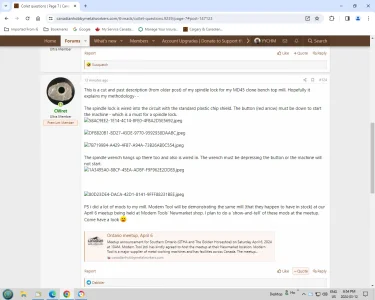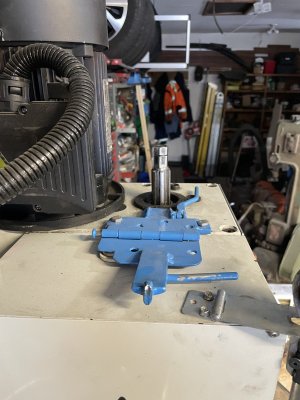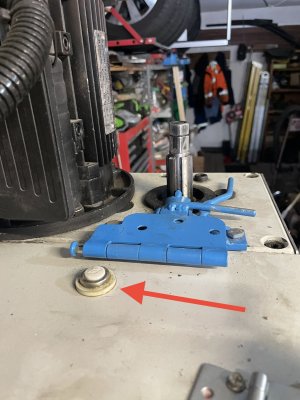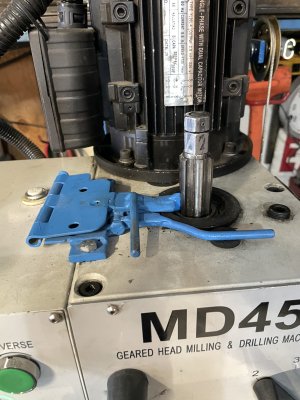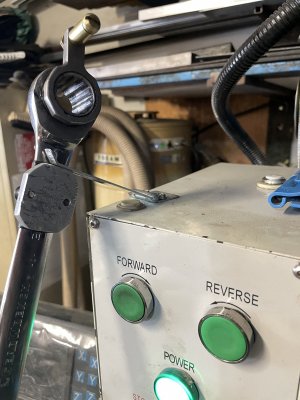-
Scam Alert. Members are reminded to NOT send money to buy anything. Don't buy things remote and have it shipped - go get it yourself, pay in person, and take your equipment with you. Scammers have burned people on this forum. Urgency, secrecy, excuses, selling for friend, newish members, FUD, are RED FLAGS. A video conference call is not adequate assurance. Face to face interactions are required. Please report suspicions to the forum admins. Stay Safe - anyone can get scammed.
-
Several Regions have held meetups already, but others are being planned or are evaluating the interest. The Calgary Area Meetup is set for Saturday July 12th at 10am. The signup thread is here! Arbutus has also explored interest in a Fraser Valley meetup but it seems members either missed his thread or had other plans. Let him know if you are interested in a meetup later in the year by posting here! Slowpoke is trying to pull together an Ottawa area meetup later this summer. No date has been selected yet, so let him know if you are interested here! We are not aware of any other meetups being planned this year. If you are interested in doing something in your area, let everyone know and make it happen! Meetups are a great way to make new machining friends and get hands on help in your area. Don’t be shy, sign up and come, or plan your own meetup!
You are using an out of date browser. It may not display this or other websites correctly.
You should upgrade or use an alternative browser.
You should upgrade or use an alternative browser.
Collet questions
- Thread starter slow-poke
- Start date
Food for thought
If that's a spindle lock, you should see @CWret s. I can't seem to find it or I'd post a link. Maybe he will chime in.
This is a cut and past description (from older post) of my spindle lock for my MD45 clone bench top mill. Hopefully it explains my methodology- -
The spindle lock is wired into the circuit with the standard plastic chip shield. The button (red arrow) must be down to start the machine - which is a must for a spindle lock.



The spindle wrench hangs up there too and also is wired in. The wrench must be depressing the button or the machine will not start.


PS i did a lot of mods to my mill. Modern Tool will be demonstrating the same mill (that they happen to have in stock) at our April 6 meetup being held at Modern Tools’ Newmarket shop. I plan to do a ‘show-and-tell’ of these mods at the meetup. Come have a look 🙂

 canadianhobbymetalworkers.com
canadianhobbymetalworkers.com
The spindle lock is wired into the circuit with the standard plastic chip shield. The button (red arrow) must be down to start the machine - which is a must for a spindle lock.
The spindle wrench hangs up there too and also is wired in. The wrench must be depressing the button or the machine will not start.
PS i did a lot of mods to my mill. Modern Tool will be demonstrating the same mill (that they happen to have in stock) at our April 6 meetup being held at Modern Tools’ Newmarket shop. I plan to do a ‘show-and-tell’ of these mods at the meetup. Come have a look 🙂

Ontario meetup, April 6
Meetup announcement for Southern Ontario (GTHA and The Golden Horseshoe) on Saturday April 6, 2024 at 10AM. MARCH 21st UPDATE. NOTICE - THE VENUE HAS CHANGED. PLEASE SEE THIS POST: Post in thread 'Ontario meetup, April 6'...
 canadianhobbymetalworkers.com
canadianhobbymetalworkers.com
This is a cut and past description (from older post) of my spindle lock for my MD45 clone bench top mill. Hopefully it explains my methodology- -
The spindle lock is wired into the circuit with the standard plastic chip shield. The button (red arrow) must be down to start the machine - which is a must for a spindle lock.



The spindle wrench hangs up there too and also is wired in. The wrench must be depressing the button or the machine will not start.


PS i did a lot of mods to my mill. Modern Tool will be demonstrating the same mill (that they happen to have in stock) at our April 6 meetup being held at Modern Tools’ Newmarket shop. I plan to do a ‘show-and-tell’ of these mods at the meetup. Come have a look 🙂

Ontario meetup, April 6
Meetup announcement for Southern Ontario (GTHA and The Golden Horseshoe) on Saturday April 6, 2024 at 10AM. MARCH 21st UPDATE. NOTICE - THE VENUE HAS CHANGED. PLEASE SEE THIS POST: Post in thread 'Ontario meetup, April 6'...canadianhobbymetalworkers.com
Images didn't come through? Did you copy and paste or cut and paste?
I like the safety aspect of your solution.This is the clip i wanted to attach (i think)
November 17, 2023
Using an open end wrench on the draw bar is a good habit. If you use a ratcheting wrench it is way tooooo easy to leave it in place and hit the start button. Don’t ask how I know!!
So my ratcheting wrench AND the spindle lock MUST be in their proper place before the machine will start. This type of lock-out is essential (IMO).
So my ratcheting wrench AND the spindle lock MUST be in their proper place before the machine will start. This type of lock-out is essential (IMO).
MrWhoopee
Ultra Member
Regarding the set-screw in an R8 spindle, when I worked for Fred and when I owned my shop, we always removed the set-screw. They aren't needed to hold the collet while tightening, they aren't sufficient to drive the collet if the taper slips and they can make it nearly impossible to get whatever is in the spindle out when they shear. DAMHIKT.
Proxule
Ultra Member
I used a syringe and rough calculated the void. And then slipped on a straw and squirted it equally between the balls.Hey hey hey..... Take it easy on me. You will note I backed all the way out to wheel bearing grease being ok by the time I got to hobby use.
I agree it's mostly all procurement agreements. But sometimes it's not. I do know for marginal applications they sometimes spec specific greases and oils and if you don't use em byebye warranty. But warranty is long gone on this one anyway.
I think you are right about 1/3 vs 1/2 fill. But can you really tell the difference between 1/3 and 1/2? I think they just say 1/3 to make sure users don't pack it to 85%. LOL!
How would you nail 1/3 anyway? I suppose one could meter it in till its full, wash it out, and then put 1/3 of the metered amount back in, but I doubt anyone does that. Or they could tell you how much 1/3 is. But I've never seen that either!
I just put in what I think is 1/2 and it's never been a problem with any bearing I ever packed. And I've packed hundreds. I've also seen what happens if you pack them!
On tapered roller. The cage is much tighter as the rollers are captured. But you can access the void from above and below.
Too much is better then not enough. As for break in you will eventually throw the excess out. Increasing speed and temps slowly. Given your load/preload is not excessive.
I used chevron SRI grease. I suppose anything would work.
Hey hey hey..... Take it easy on me.
just attacking what's imo a myth, not directed at you in any way shape or form, sorry if it came across that way. ..... otoh I am not a tribologist and can't say for sure hence the hedging language "inclined to think". 🙂
Too much is better then not enough. As for break in you will eventually throw the excess out. Increasing speed and temps slowly.
That's sort of the conventional wisdom. My reasoning for 50% is simply that it's easier to estimate and can't really see why 33.3% is better.
However, I do know that as @Mcgyver suggests, 1/3 is what most bearing manufacturers suggest.
Its also easy to see why too much is not good. So I don't really agree that too much is better than not enough. Lots of bearings do just fine on very little but die with too much. I think we can all agree that zero is bad. However, we might not all agree that 100% is not good. IMHO, the difference mostly relates to the application and bearing type. Bearings that are sealed on one side should NEVER be filled to capacity. Thats a real risk of blowing the seal or worse. I really don't think the amount is critical though. It would be interesting to read a technical bulletin from a bearing manufacture. I'll reach out to a few of my contacts and see what I can find.
Proxule
Ultra Member
Sure but in this context. As unsealed TR bearings. Too much can and will be easily evacuated when you do your break in. Sealed bearings as you mentioned should not be. Although in my exp I have not had to refill a sealed bearing outside of a emergency situation. Or bearings that are hard or pricey to source. P5 for example.
Sure but in this context. As unsealed TR bearings. Too much can and will be easily evacuated when you do your break in. Sealed bearings as you mentioned should not be. Although in my exp I have not had to refill a sealed bearing outside of a emergency situation. Or bearings that are hard or pricey to source. P5 for example.
I had intended to say that but forgot. You are right of course.
There is one caveat though. If you pack it too full, it won't allow spindle oil to flow through it. That could result in an oil/grease plug and inadequate lubrication for the spindle nose. I think the odds of that are low, but they are not zero.
The original papers I have seen with a number of 10 up to 50 hp. electric motors, have noted a grease type, and a grease amount in weight, to be added every so many hours of operating time. In hand with this is often the instruction to remove the zerk or other plug, after greasing, operate motor until at temputure, for a time period. This would allow excess grease to leave and not burst a seal.
As not many have motor documents, it can be a crap shoot. Lots of different types of grease, lots of manufactors, lots of, this is better then this. Could sound like an oil post!
My father said he worked at an old mine once, he went to the boss one day saying they had no grease for the ore cart wheel bearings, and dam near couldn't move them! Boss said to use canned butter, they had lots of that!
Over greasing as well under greasing can cause temputure problems. A number of times I have taken bearings out of old equipment, the bearing has only the soap base left in it and no oil, nearly hard as dried mud, fresh grease would not help much.
A bearing seminar I went to, did say, manufacters recommend a grease based on operating rpm, heat, loading, projected use, grease type for corrosion and ball/roller/race fatigue/failure resistance and seal compatability, if used, and availability. So little bearings are one thing, but when you need more then one crane to even move the bearing, you don't mess around. If the bearing is supporting people, you don't mess around.
Some lube is better then no lube, some lube is better then to much lube, the rite lube "may" make a difference.
As not many have motor documents, it can be a crap shoot. Lots of different types of grease, lots of manufactors, lots of, this is better then this. Could sound like an oil post!
My father said he worked at an old mine once, he went to the boss one day saying they had no grease for the ore cart wheel bearings, and dam near couldn't move them! Boss said to use canned butter, they had lots of that!
Over greasing as well under greasing can cause temputure problems. A number of times I have taken bearings out of old equipment, the bearing has only the soap base left in it and no oil, nearly hard as dried mud, fresh grease would not help much.
A bearing seminar I went to, did say, manufacters recommend a grease based on operating rpm, heat, loading, projected use, grease type for corrosion and ball/roller/race fatigue/failure resistance and seal compatability, if used, and availability. So little bearings are one thing, but when you need more then one crane to even move the bearing, you don't mess around. If the bearing is supporting people, you don't mess around.
Some lube is better then no lube, some lube is better then to much lube, the rite lube "may" make a difference.
Proxule
Ultra Member
Aye. Most grease guns output 1gram per shot and I normally guestimate bearing size by the numbers and shoot accordingly. If no documents exist.
Less is better as a temp spike will not be correctable. Not unless we pull the endbells on the electric motor.
Your comment on soap base is my exp too. Hence preventative maintenance. The soap will always seperate out after X hrs or thrashing and major temp changes.
Less is better as a temp spike will not be correctable. Not unless we pull the endbells on the electric motor.
Your comment on soap base is my exp too. Hence preventative maintenance. The soap will always seperate out after X hrs or thrashing and major temp changes.

